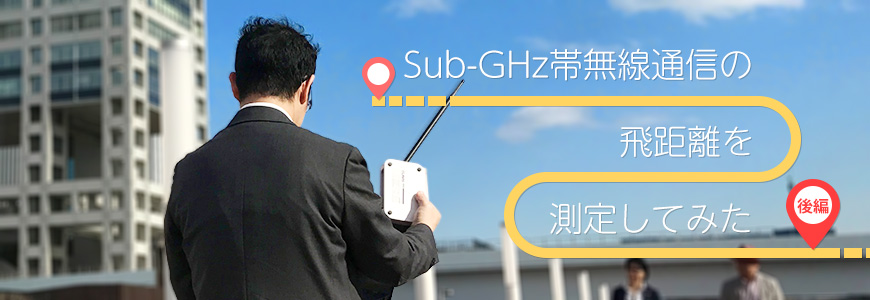I will make an improved version based on the previous reflection points
In the first part, "Let's try it first," we experimented with how far a packet could actually fly on a circuit board that had acquired technical suitability, but we weren't able to measure it as we had hoped. Below is a summary of the previous reflections.
- A case with built-in evaluation board is required
- Requires buttons that can be touched from outside the case
- weather matters
Based on the above reflection points, we decided to fix the evaluation board and antenna to the housing in order to ensure reliable measurements.
This time, I will introduce the production process of the improved version and the measurement results using the improved version.
Making an improved version
Several engineers worked on the improved version.
First, make a hole for the antenna in the case that houses the evaluation board. The case with a hole fixes the screw and the evaluation board with a few people.
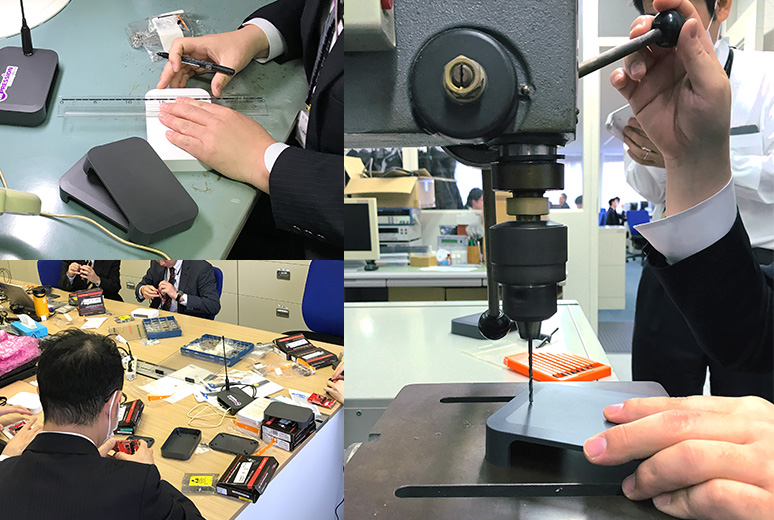
Finally, since we want to put it on a PC and measure it, it is completed by attaching a non-slip rubber to the case.
I made a total of 5 units for each antenna.
Now you are ready for the improved version.
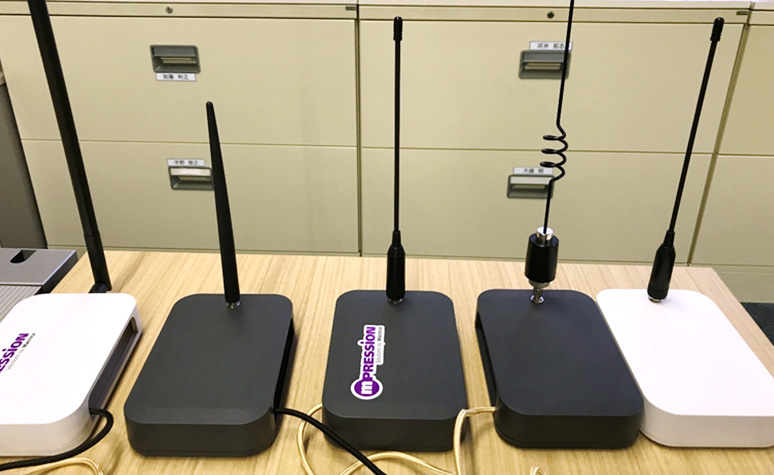
Measured in Odaiba blessed with good weather!
Since I was able to measure a distance of 580m even in the rain, I decided to send radio waves from the Rainbow Bridge to Odaiba because I wanted to fly it to a wider area. If you fly it toward the sea, you don't have to worry about obstructions, so it should be easy to measure the maximum distance!
By the way, the distance from Rainbow Bridge to the Statue of Liberty in Odaiba is about 1.6 km.
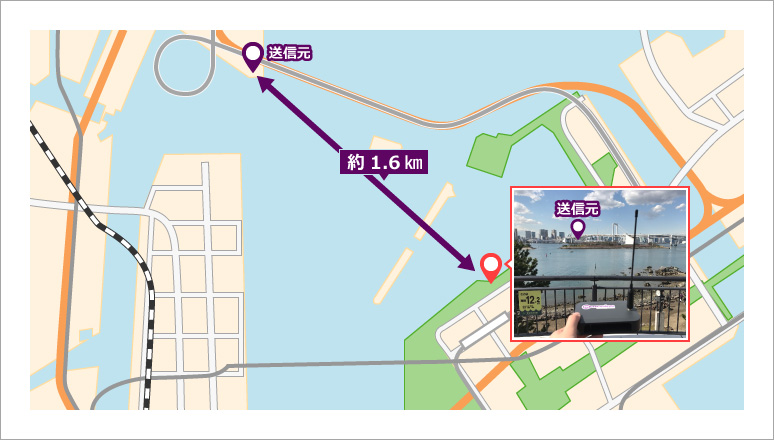
Measuring method
In this measurement method, one person holds the transmitter and transmits radio waves from the Rainbow Bridge, and the remaining members carry the improved housing and check whether the packets are received.
I put it on the PC as shown below and walked, so I felt that it was good to attach the rubber immediately.
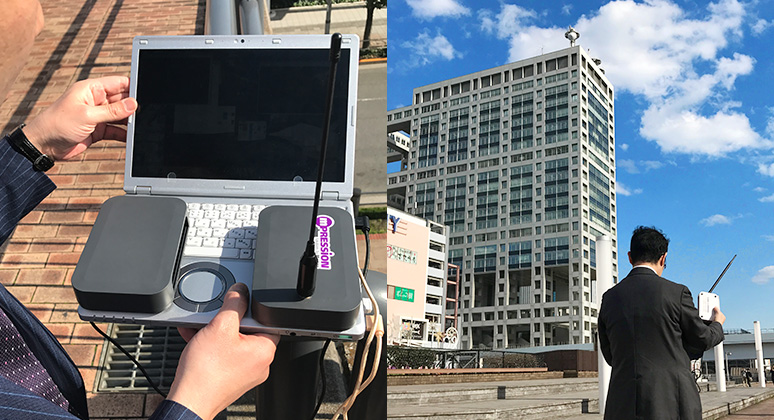
What are the results of the measurement?
direct distance
Just when I came near Fuji TV, one of the multiple receivers that used the pattern antenna stopped receiving signals.
Those with external antennas still go far. After all, we reached the side of Diver City.
In summary, the diagram looks like this:
- [Red] Receiver 1 (equipped with pattern antenna): about 1.75km
- [Blue] Receiver 2 (with external antenna): about 2.00km
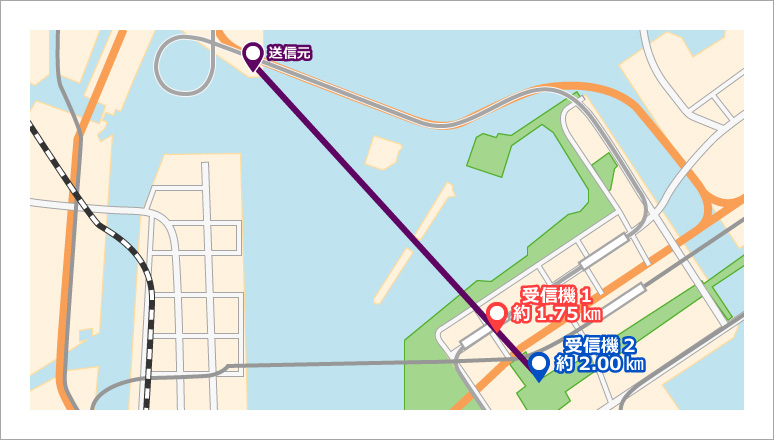
Measurement by area
In addition to the straight-line distance, I also checked the area that can be measured around the city of Odaiba. The results are as follows.
- Green area: Both receivers 1 and 2 are good
- Yellow area: Both receiver 1 and receiver 2 are able to receive packets despite temporary interruptions
- Red area: Both receiver 1 and 2 cannot be measured
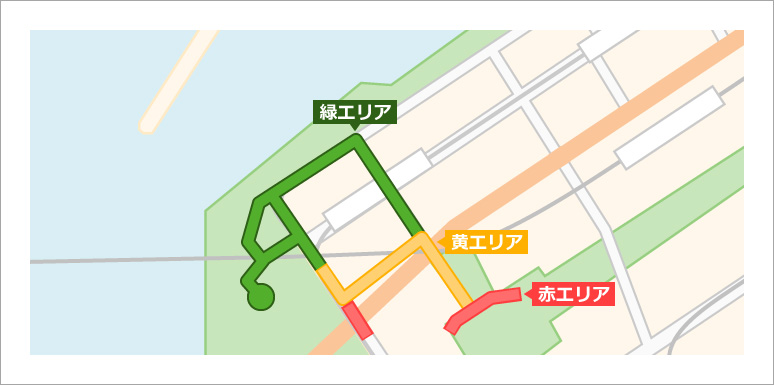
I was very surprised because the flying distance came out more than expected. However, since the antenna was simply fixed to the evaluation board with a simple housing, we learned that even a slight change in the environment could have a large impact on whether or not packets could be received.
The following are shields that may have affected packet reception.
- forest (where tall trees grow)
- Building (Packets will be harder to reach if you are in the back of the building)
- Bridges (Compared to normal roads, it is difficult to receive packets on bridges.)
On the other hand, in squares with nothing tall and places facing the sea, packets were received very well even at long distances.
Sub-GHz can reach up to about 2km if there is no obstruction
It was raining last time, so I stopped the measurement on the way and could only measure 580m. I found out that it can reach about 2 km in Odaiba, so I was very happy that I could get the results of the second challenge.
This is the end of the series on measuring the flight distance of Sub-GHz band wireless communication, but we hope that it will be useful for your development.
Contact Us
If you are looking for detailed information on TI's development kits introduced in this article or Sub-GHz compatible products, please contact us here.
Related information
Click here for recommended articles/materials
I tried to measure the flight distance of Sub-GHz band wireless communication Part 1 "Let's try it first"
I tried to measure the flying distance of Sub-GHz band wireless communication Part 2 "Improved and challenged 2 km"
The road to technical standard conformity certification Episode 1 "Let's get technical standards"
The Road to Technical Regulations Conformity Certification Episode 2 "Preparing Documents"
The Road to Acquiring Technical Standards Conformity Certification Episode 3 “Examination”
Click here for recommended seminars/workshops
Wireless Seminar for Beginners - First wireless product starting with TI - <Free>
Click here to purchase products
LAUNCHXL-CC1310
*Since this evaluation board has not acquired domestic technical certification, please use it at your own discretion.

